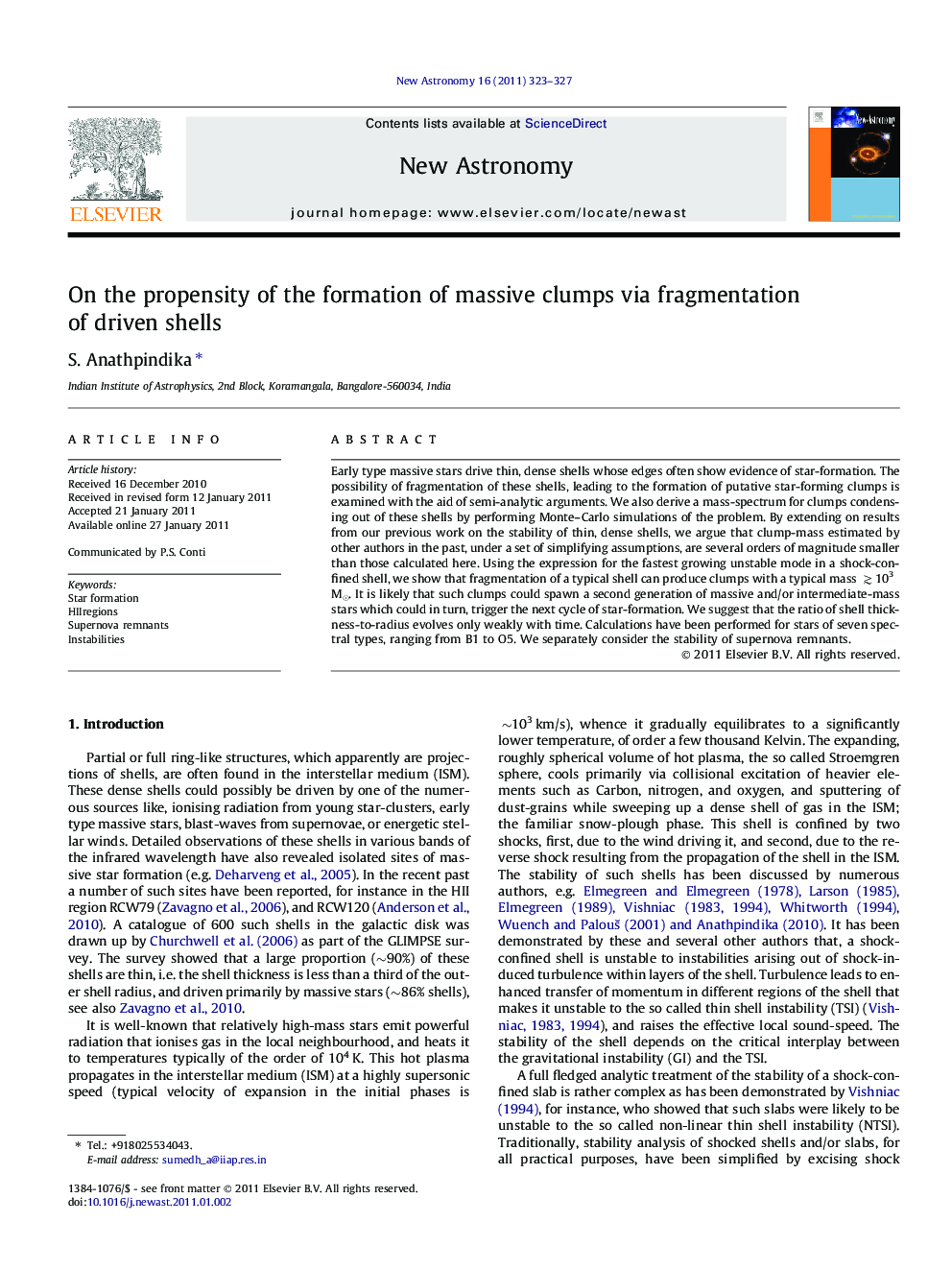| Article ID | Journal | Published Year | Pages | File Type |
|---|---|---|---|---|
| 1779251 | New Astronomy | 2011 | 5 Pages |
Abstract
Early type massive stars drive thin, dense shells whose edges often show evidence of star-formation. The possibility of fragmentation of these shells, leading to the formation of putative star-forming clumps is examined with the aid of semi-analytic arguments. We also derive a mass-spectrum for clumps condensing out of these shells by performing Monte-Carlo simulations of the problem. By extending on results from our previous work on the stability of thin, dense shells, we argue that clump-mass estimated by other authors in the past, under a set of simplifying assumptions, are several orders of magnitude smaller than those calculated here. Using the expression for the fastest growing unstable mode in a shock-confined shell, we show that fragmentation of a typical shell can produce clumps with a typical mass â³103Â Mâ. It is likely that such clumps could spawn a second generation of massive and/or intermediate-mass stars which could in turn, trigger the next cycle of star-formation. We suggest that the ratio of shell thickness-to-radius evolves only weakly with time. Calculations have been performed for stars of seven spectral types, ranging from B1 to O5. We separately consider the stability of supernova remnants.
Related Topics
Physical Sciences and Engineering
Physics and Astronomy
Astronomy and Astrophysics
Authors
S. Anathpindika,
